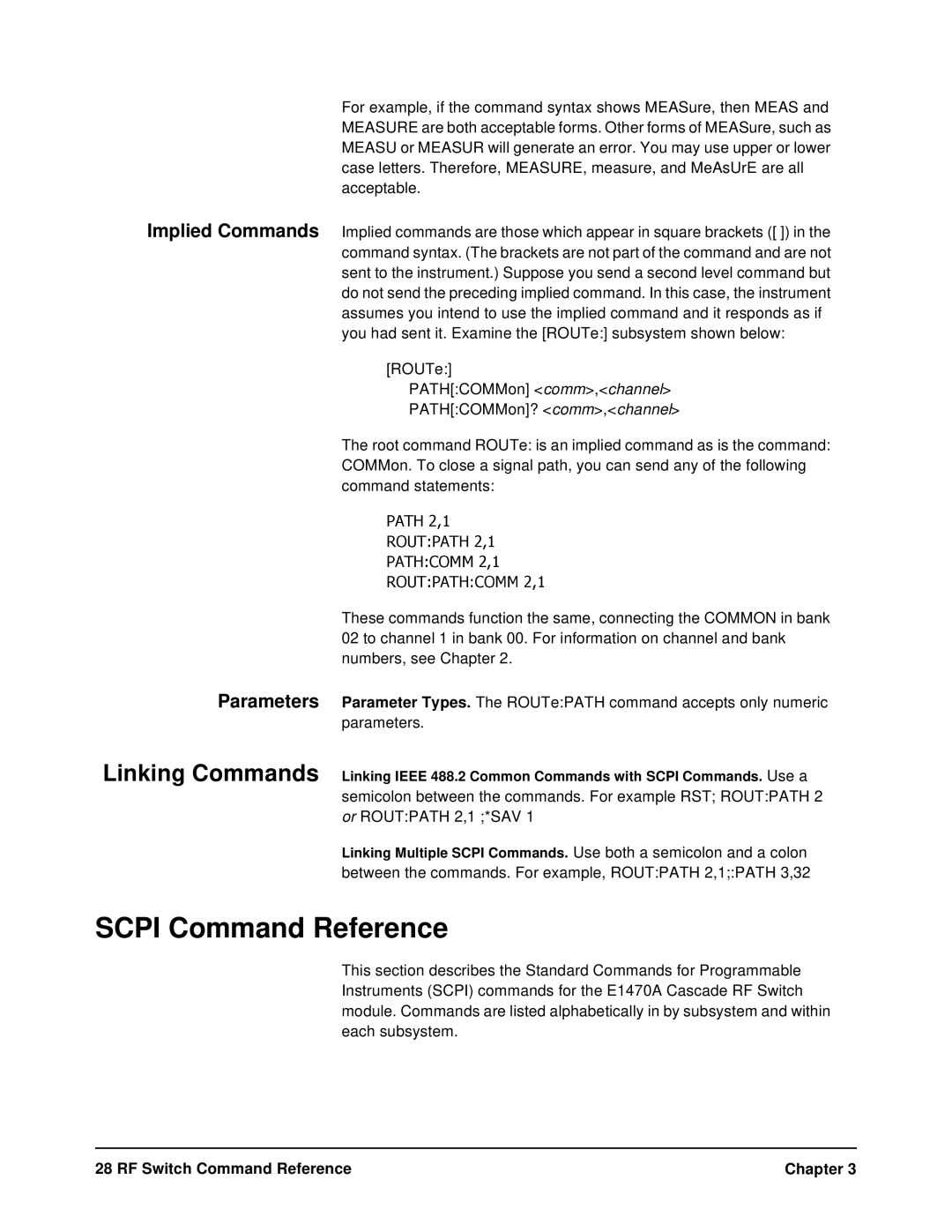For example, if the command syntax shows MEASure, then MEAS and MEASURE are both acceptable forms. Other forms of MEASure, such as MEASU or MEASUR will generate an error. You may use upper or lower case letters. Therefore, MEASURE, measure, and MeAsUrE are all acceptable.
Implied Commands Implied commands are those which appear in square brackets ([ ]) in the command syntax. (The brackets are not part of the command and are not sent to the instrument.) Suppose you send a second level command but do not send the preceding implied command. In this case, the instrument assumes you intend to use the implied command and it responds as if you had sent it. Examine the [ROUTe:] subsystem shown below:
[ROUTe:]
PATH[:COMMon] <comm>,<channel> PATH[:COMMon]? <comm>,<channel>
The root command ROUTe: is an implied command as is the command: COMMon. To close a signal path, you can send any of the following command statements:
TheseROUT:PATHcommands:COMM2,1function:COMM2,12,1the same, connecting the COMMON in bank 02 to channel in bank 00. For information on channel and bank numbers, see Chapter 2.
Parameters
Linking Commands
Parameter Types. The ROUTe:PATH command accepts only numeric parameters.
Linking IEEE 488.2 Common Commands with SCPI Commands. Use a semicolon between the commands. For example RST; ROUT:PATH 2
or | 2,1 ;*SAV |
Linking Multiple SCPI Commands. Use both a semicolon and a colon between the commands. For example, ROUT:PATH 2,1;:PATH 3,32
SCPI Command Reference
This section describes the Standard Commands for Programmable Instruments (SCPI) commands for the E1470A Cascade RF Switch module. Commands are listed alphabetically in by subsystem and within each subsystem.
28 RF Switch Command Reference | Chapter 3 |
